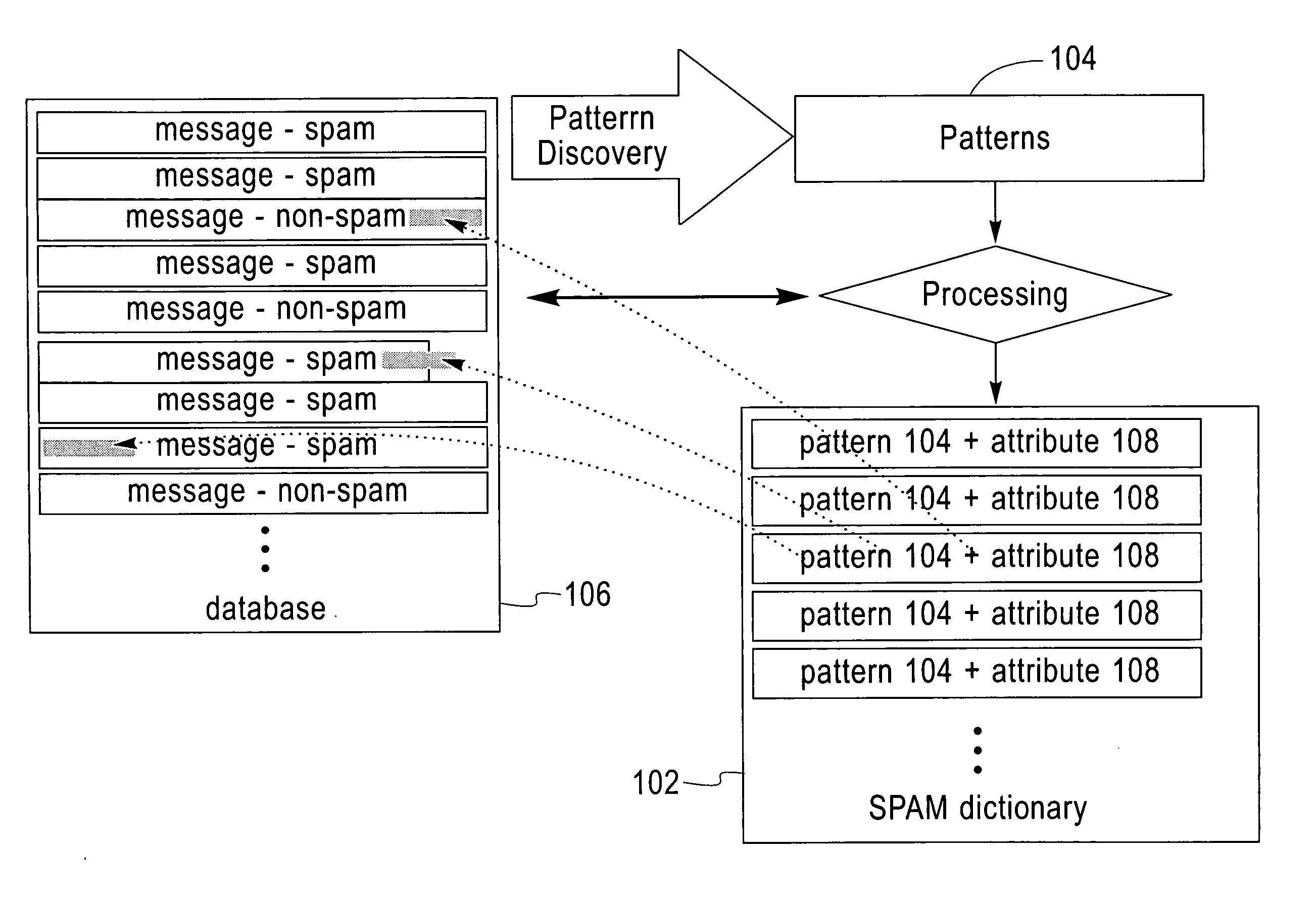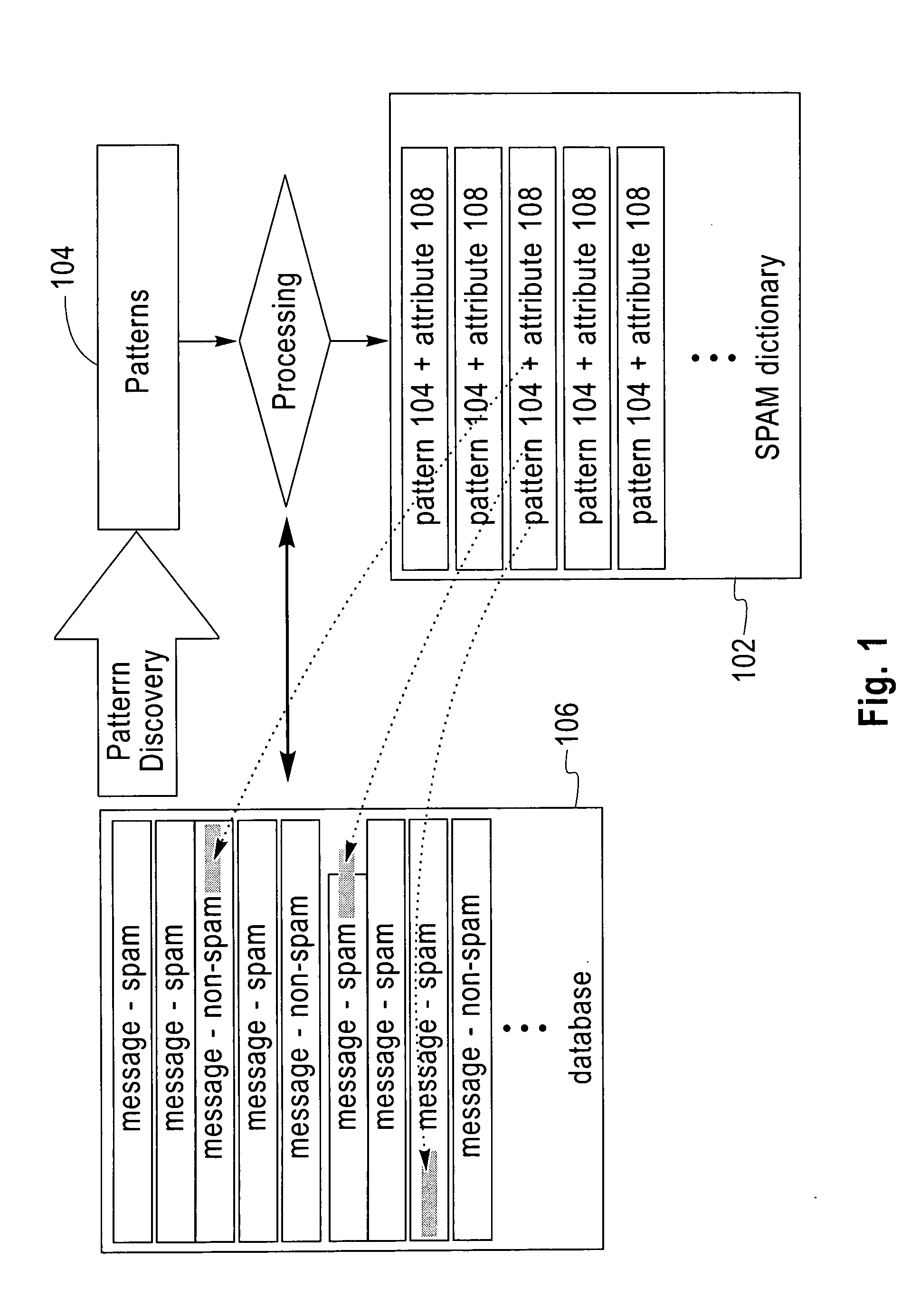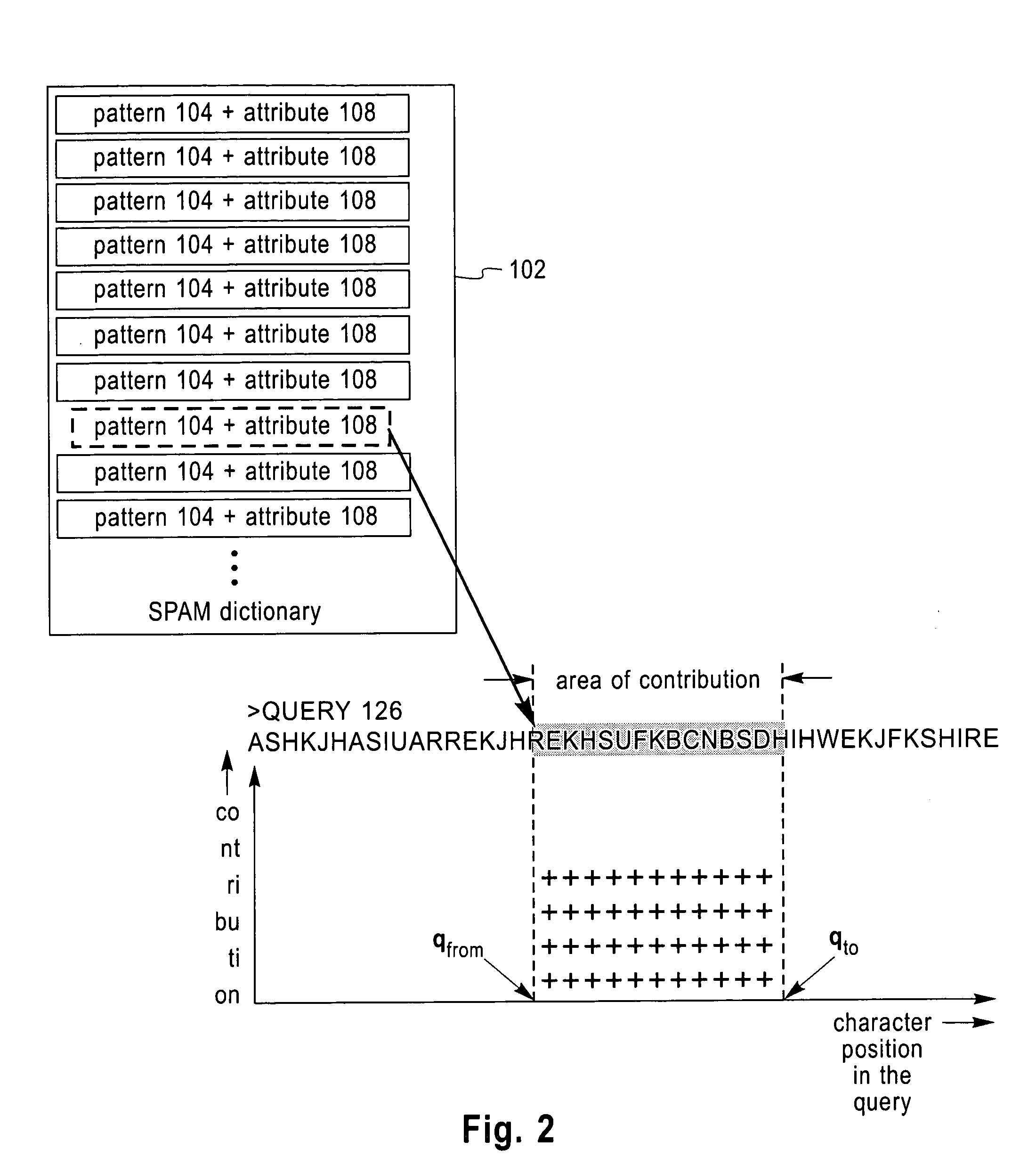Method and apparatus for the automatic identification of unsolicited e-mail messages (SPAM)
a technology of automatic identification and unsolicited e-mail, applied in the field of automatic analysis of electronic messages, can solve the problems of increasing the amount of unsolicited email that reaches the mailbox of users, the cost of spam in the form of productivity loss is estimated to be 100-fold, and the performance of these methods suffers
- Summary
- Abstract
- Description
- Claims
- Application Information
AI Technical Summary
Benefits of technology
Problems solved by technology
Method used
Image
Examples
Embodiment Construction
[0046] The present invention will be described below in the context of an illustrative labeling of an email message which for the most part contains letters from a natural human language possibly interspersed with HTML directives etc. However, it is to be understood that the present invention is not limited to such a particular representation of an email message. Rather, the invention is more generally applicable to any representation of an email message, as would be apparent to a person of ordinary skill in the art. Thus, the teachings of the present invention should not be construed as being limited to the analysis of email messages written in a given natural language, e.g. English, and possibly using punctuation or other distinguishable marks. As such, the teachings of the present invention are more generally applicable.
[0047] Automated elucidation of an email message's SPAM nature, as described herein, is beneficial as it minimizes the amount of manual labor that is associated ...
PUM
 Login to View More
Login to View More Abstract
Description
Claims
Application Information
 Login to View More
Login to View More - R&D
- Intellectual Property
- Life Sciences
- Materials
- Tech Scout
- Unparalleled Data Quality
- Higher Quality Content
- 60% Fewer Hallucinations
Browse by: Latest US Patents, China's latest patents, Technical Efficacy Thesaurus, Application Domain, Technology Topic, Popular Technical Reports.
© 2025 PatSnap. All rights reserved.Legal|Privacy policy|Modern Slavery Act Transparency Statement|Sitemap|About US| Contact US: help@patsnap.com



